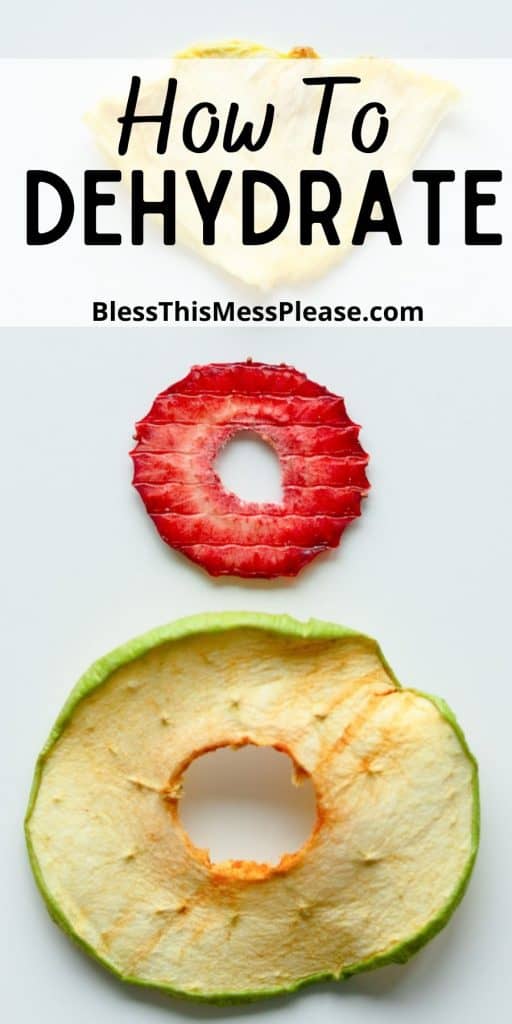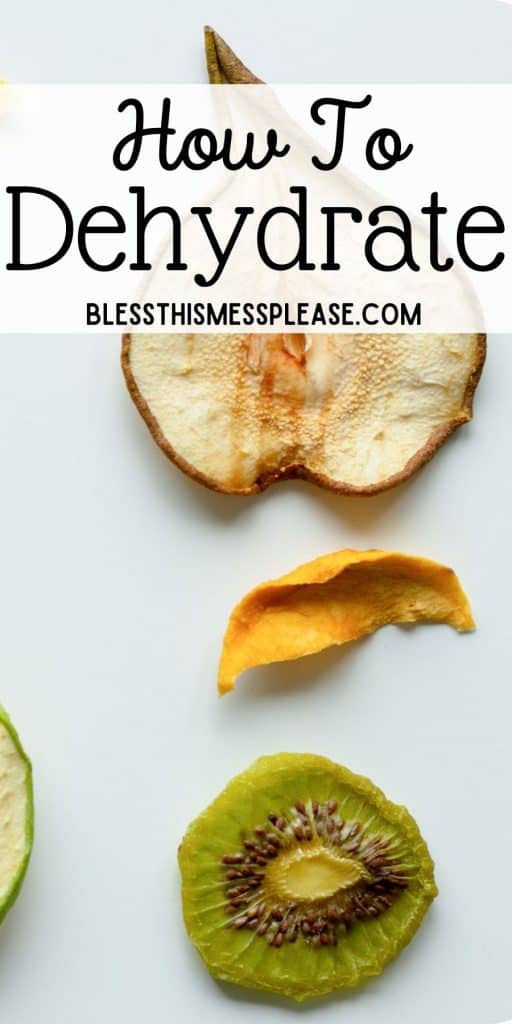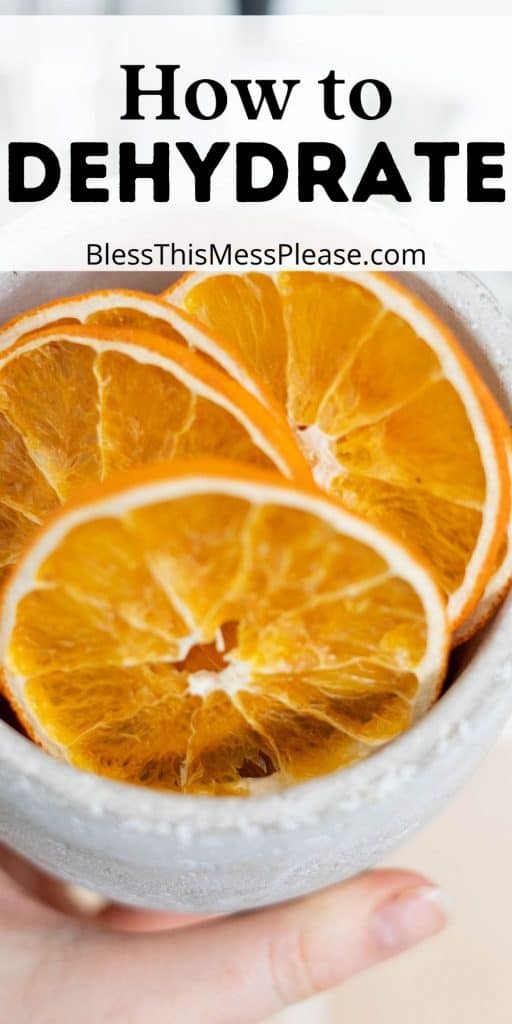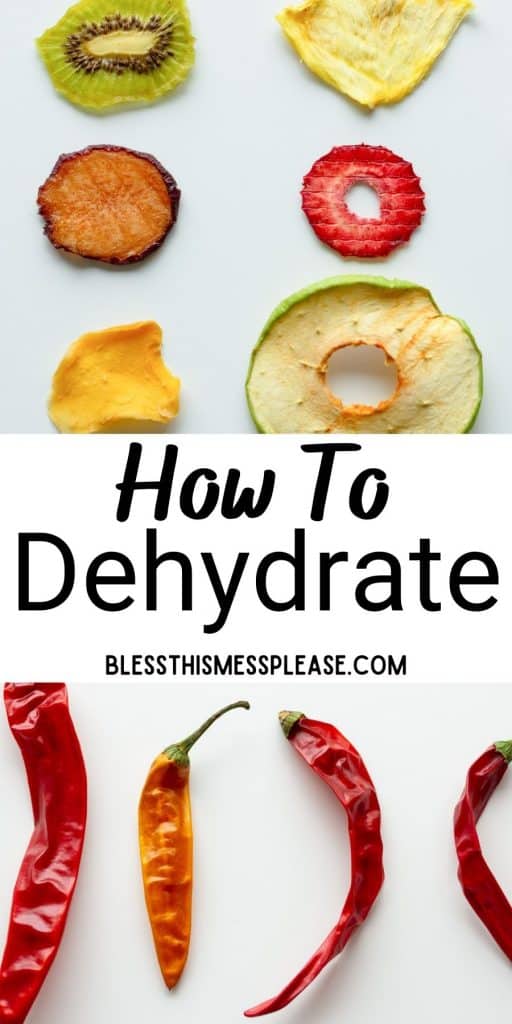This post may contain affiliate links. Please read our disclosure policy.
As more and more of us are getting into gardening, growing our own food, shopping locally, and reducing food waste, we are learning new skills like freezing, canning, and dehydrating! This is a full guide on how to dehydrate fruits and vegetables. This article covers the basics on what, how, and why to dehydrate fruits and vegetables at home. I hope you find it helpful.
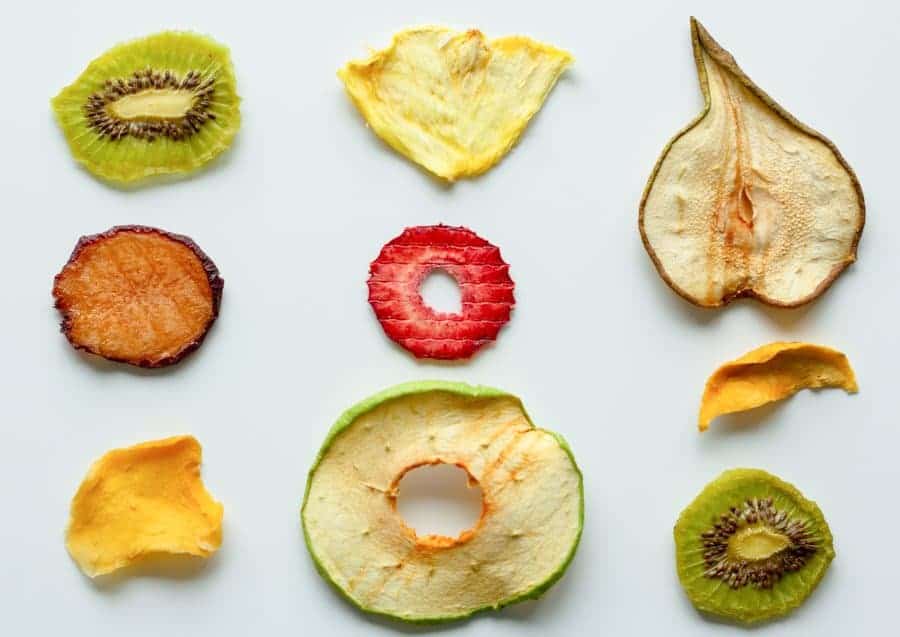
During the last few years, lots of people have become more interested in ways to garden, bake, and preserve food like so many of us remember our grandparents or great-grandparents doing. Gardening and figuring out how to save all that goodness for another day go hand in hand. Most people think of canning but dehydrating is a great way to preserve food that almost always takes up way less storage space than shelves of canning jars. And you still get to enjoy the fruits of your summertime labors all year long!
Table of Contents
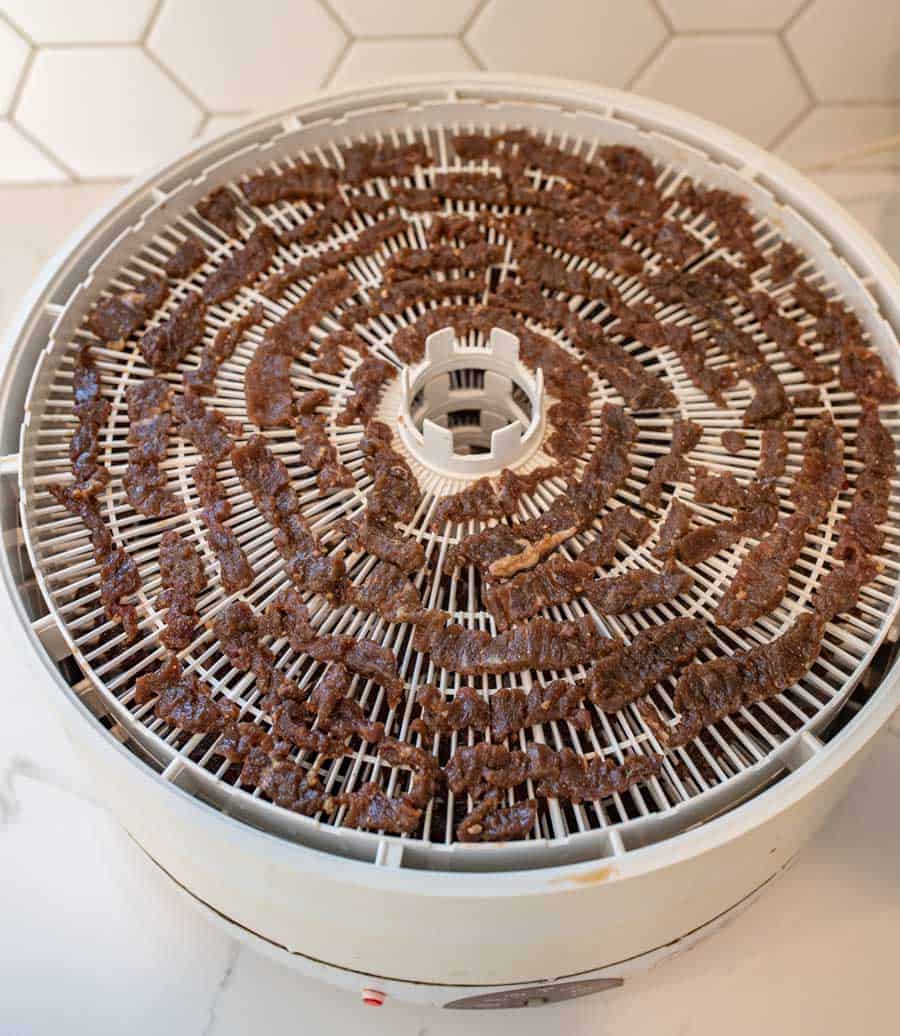
Why You’ll Love Dehydrating
- Extended Shelf Life: Dehydrating significantly extends the shelf life of fruits and vegetables, allowing you to store them for months or even years without spoilage.
- Enhanced Flavors: The dehydration process concentrates the natural sugars and flavors, making fruits taste sweeter and more intense, and vegetables more flavorful.
- Convenient and Portable: Dehydrated fruits and vegetables are lightweight and portable, making them perfect for snacks on the go, hiking, camping, or emergency preparedness.
Ingredients
- Dehydrator or an oven that can be set to lower than 200°F
- Fruits or vegetables: thinly sliced to allow them to dry thoroughly
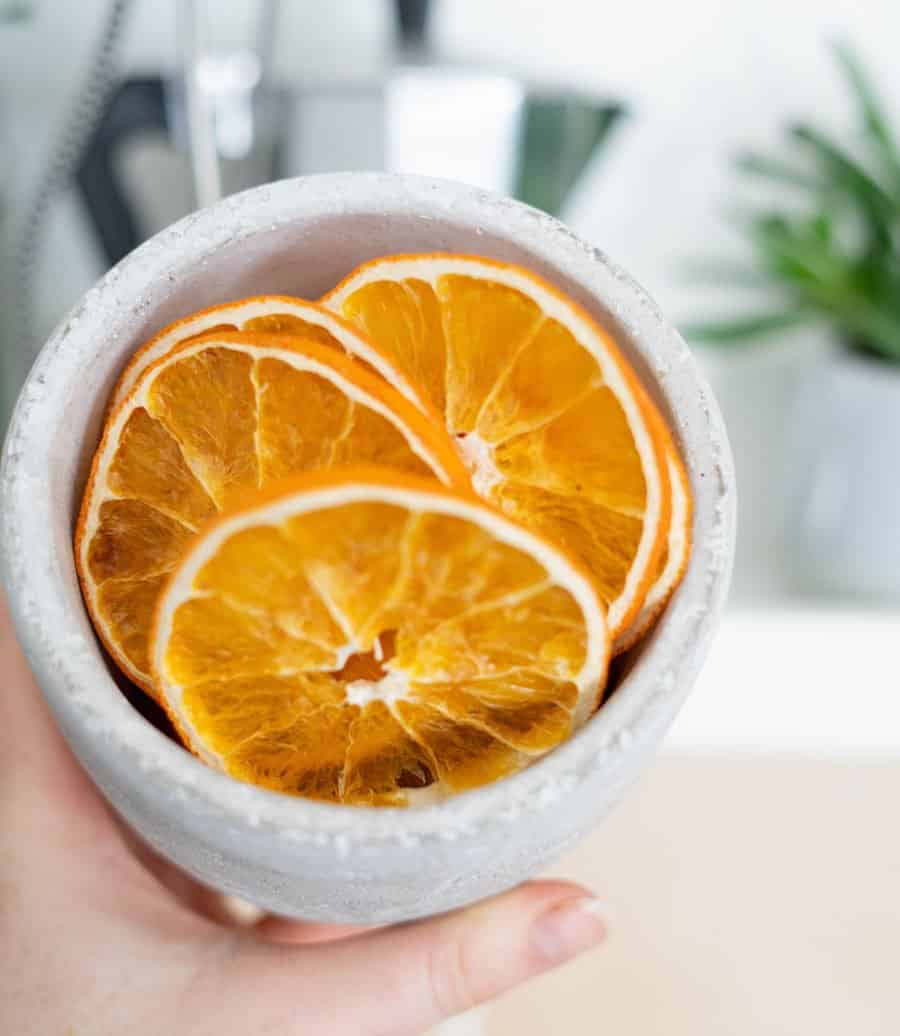
How to Dehydrate
Make sure fruit or vegetables are placed in a single layer on their drying trays and then follow the manufacturer’s instructions. New dehydrators will come with instructions and recipe booklets that let you know how to prepare fruit and how long they will typically need to fully dehydrate. It’s a simple process that is easy to learn.
Dehydrating is the process of removing water from foods so that bacteria, yeasts, and molds cannot grow and spoil the food, allowing food to be preserved for later use.
Dehydrator or an oven or even something like a solar dehydrator (I’ve dried things in my hot car window!). The cream of the crop traditionally for dehydrators is the Excalibur brand dehydrators. They are very popular and I know lots of people that have had them. I’ve only owned preowned dehydrators that I’ve gotten second hand, but if I were going to buy new I’d probably go for an Excalibur. I often use my oven too, but many ovens don’t have a low enough setting for dehydrating.
By removing the moisture in foods, it prevents bacteria from growing and allows for foods to last longer. Dehydrating food is a simple way to preserve food at home and helps to make in season produce last in the off season.
It depends on what it is! I’ll often dehydrate fruit or fruit leather and we’ll eat them as they are for snacks, or throw dehydrated fruit into granola, trail mix, or on top of yogurt. If I dehydrate veggies I normally will add them to things like soup to use them or blend them up in smoothies. We eat them on their own less often but I do love to use them in cooking.
And you can dehydrate more than fruits and vegetables! You can make homemade jerky and my famous fruit leather recipe too!
What can you dehydrate?
Fruits that can be dehydrated:
| Apples | Grapes |
| Apricots | Nectarines |
| Bananas | Papayas |
| Blueberries | Peaches |
| Cherries | Pears |
| Coconuts | Persimmons |
| Currants | Plums |
| Dates | Rhubarb |
| Figs | Strawberries |
Vegetables that can be dehydrated:
| Beans, Green | Parsnips |
| Beans, Lima | Peas |
| Beets | Peppers, Green or Red |
| Carrots | Peppers, Chili |
| Sweet Corn | Popcorn |
| Garlic | Potatoes |
| Horseradish | Pumpkins |
| Mushrooms | Tomatoes |
| Onions | Turnips |
| Parsley |

Expert Tips
- Slice the fruits and vegetables uniformly. (Make sure that they are relatively thin – a food processor or mandolin slicer is really helpful for this part.) For things like green beans, it’s really helpful to slice them in half so that they dry evenly.
- Some fruits like apples and pears can brown. A quick dip in a water and lemon juice bath can help prevent it.
- Vacuum sealing or putting oxygen absorbers in with your dehydrated goods can help extend their shelf life.
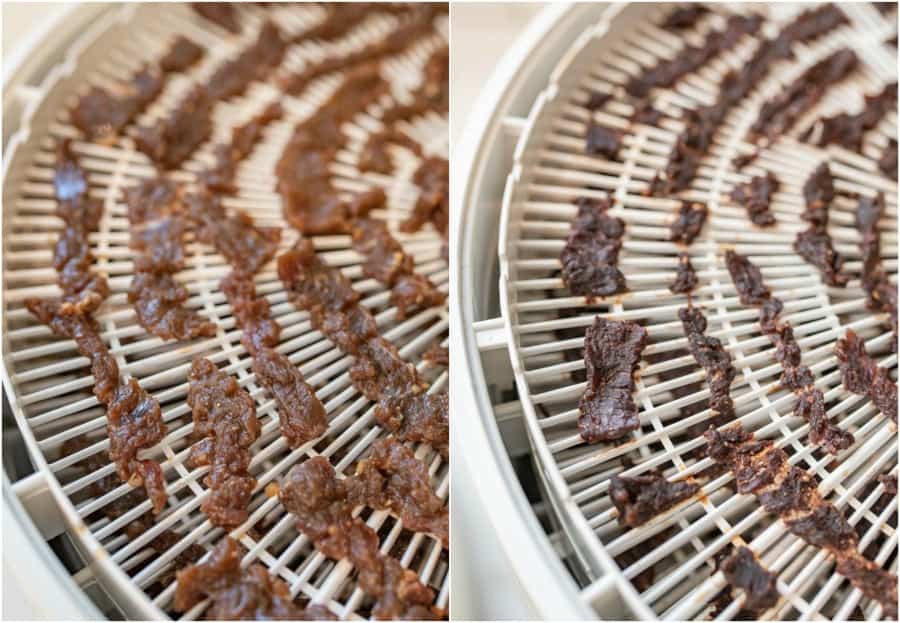
How Should Dehydrated Foods Be Stored?
In airtight containers or bags. This prevents food from rehydrating and allowing microbial growth. If you live in a moist environment consider getting oxygen absorbing packets to keep in your bags to help things to not rehydrate. You can also store home dehydrated foods in the fridge or freezer, or even in vacuum sealed bags for long term storage.
Factors to Consider When Dehydrating
- Low energy cost for dehydrator, higher for oven drying
- Short preparation time (you don’t need to spend a lot of time prepping foods for dehydrating)
- Long processing time (it can take 8-24 hours to dehydrate large moist fruits)
- Losses of vitamins A and C
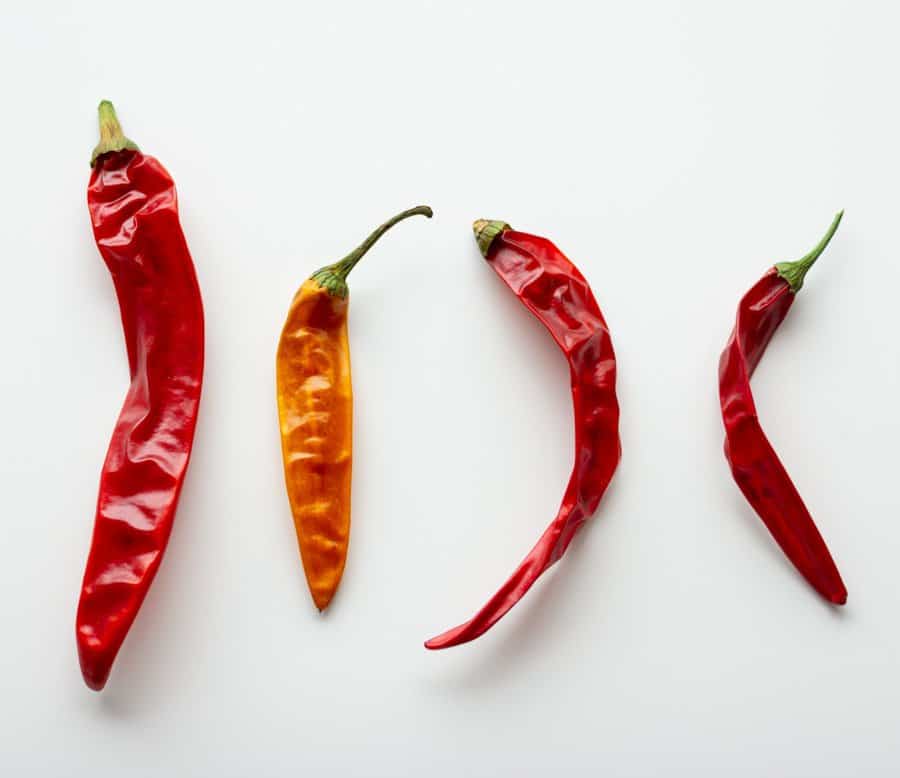
How Much Will I Have After I Dehydrate?
| Product | Amount Purchased or Picked in Pounds | Amount Dried Product in Pounds | Amount Dry Product in Pints |
| Apples | 12 | 1 ¼ | 3 |
| Beans, Lima | 7 | 1 ¼ | 2 |
| Beans, Snap | 6 | ½ | 2 ½ |
| Beets | 15 | 1 ½ | 3-5 |
| Broccoli | 12 | 1 ¼- 1 1/2 | 12-15 |
| Carrots | 15 | 1 ¼ | 2-4 |
| Celery | 12 | ¾ | 3 ½-4 |
| Corn | 18 | 2 ½ | 4- 4 ½ |
| Greens | 3 | ¼ | 5 ½ |
| Onions | 12 | 1 ½ | 11 ½ sliced, 4 ½ shredded |
| Peaches | 12 | 1- 1 ½ | 2-3 |
| Pears | 14 | 1 ½ | 3 quartered |
| Peas | 8 | ¾ | 1 |
| Pumpkin | 11 | ¾ | 3 ½ |
| Squash | 10 | ¾ | 5 |
| Tomatoes | 14 | 1/2 | 2 ½- 3 |
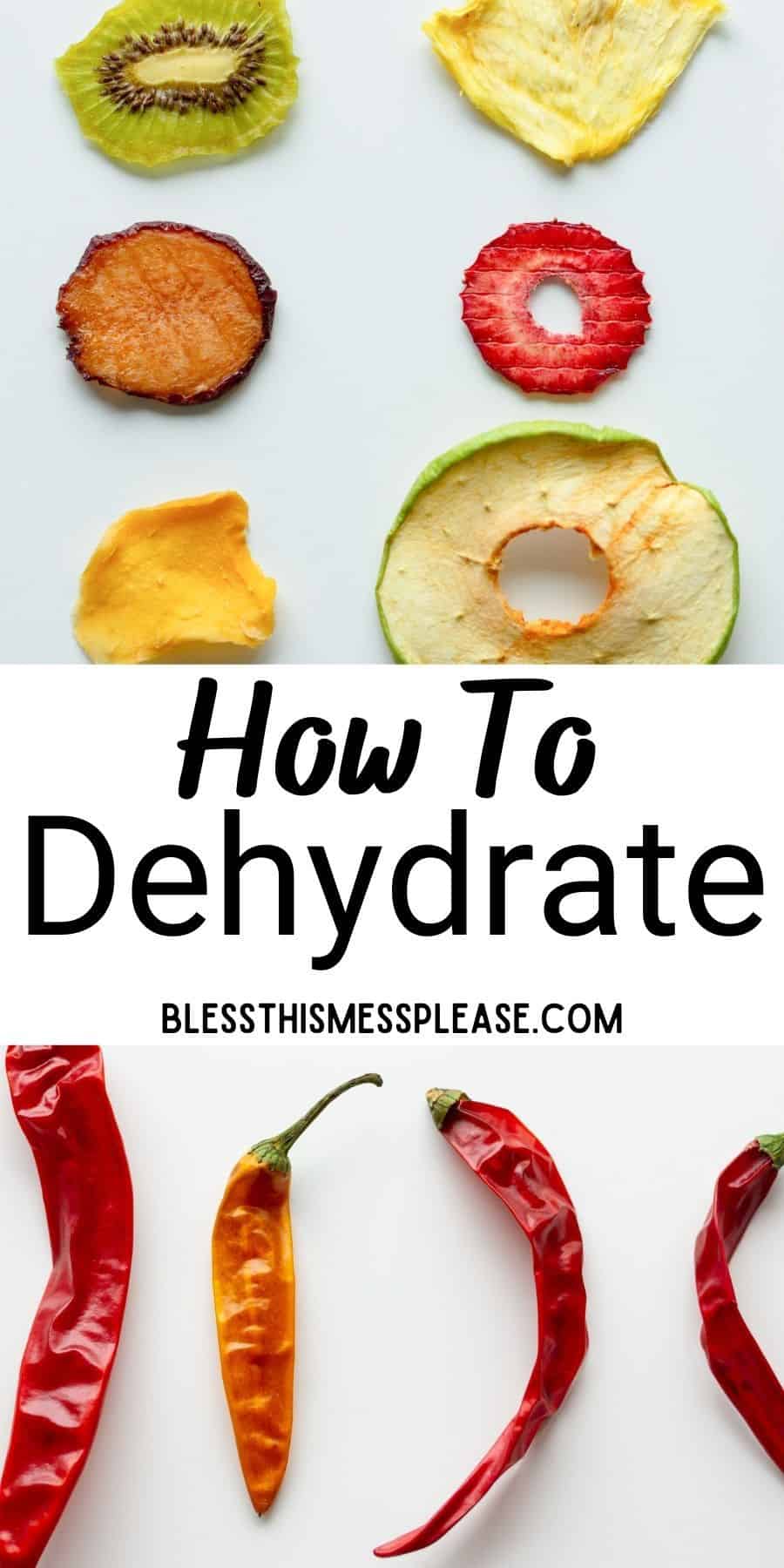
Did you make this recipe? Leave a ⭐️ review and share it on Instagram, Facebook, or Pinterest!

